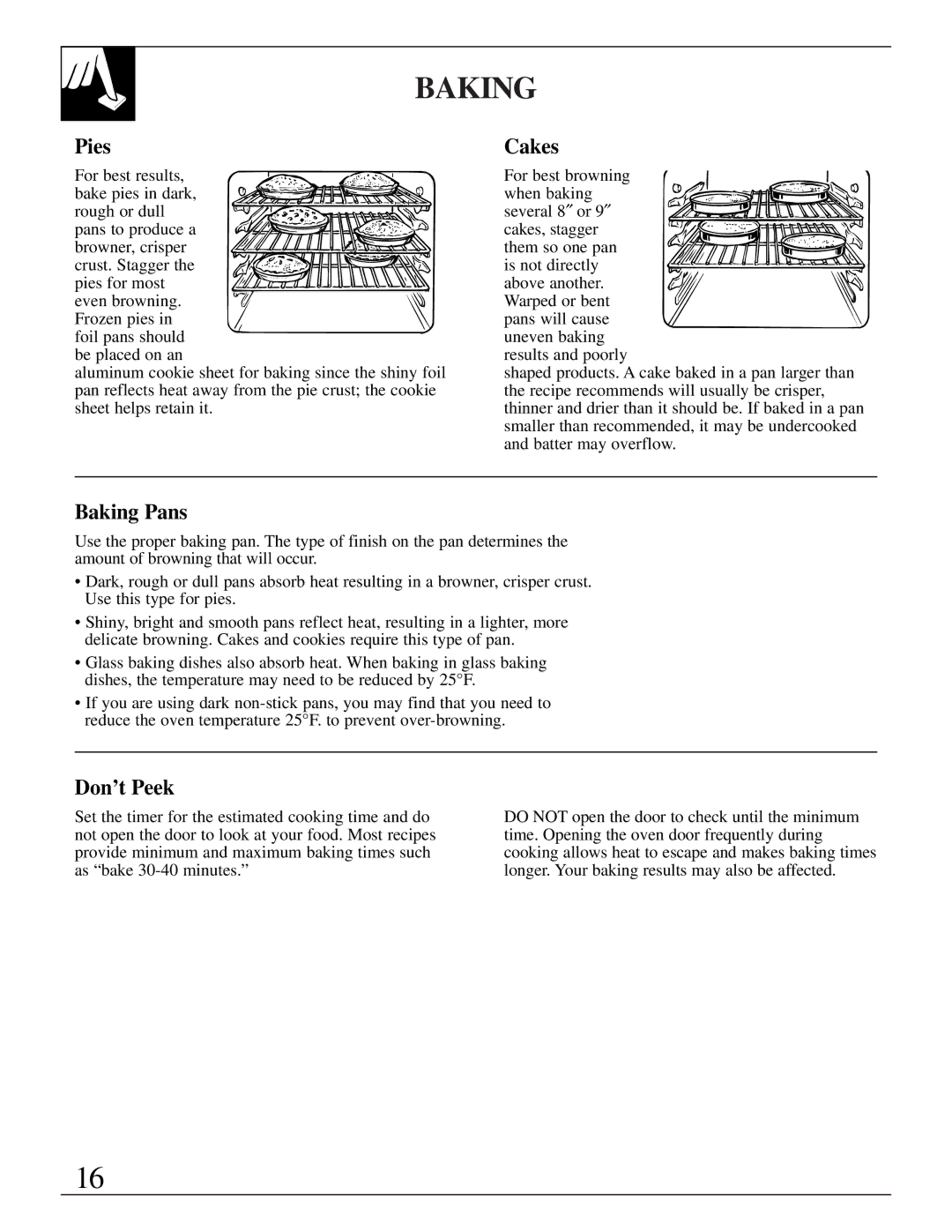
BAKING
Pies
For best results, bake pies in dark, rough or dull pans to produce a browner, crisper crust. Stagger the pies for most even browning. Frozen pies in
foil pans should be placed on an
aluminum cookie sheet for baking since the shiny foil pan reflects heat away from the pie crust; the cookie sheet helps retain it.
Cakes
For best browning
when baking several 8″ or 9″ cakes, stagger them so one pan is not directly above another.
Warped or bent pans will cause uneven baking results and poorly
shaped products. A cake baked in a pan larger than the recipe recommends will usually be crisper, thinner and drier than it should be. If baked in a pan smaller than recommended, it may be undercooked and batter may overflow.
Baking Pans
Use the proper baking pan. The type of finish on the pan determines the amount of browning that will occur.
•Dark, rough or dull pans absorb heat resulting in a browner, crisper crust. Use this type for pies.
•Shiny, bright and smooth pans reflect heat, resulting in a lighter, more delicate browning. Cakes and cookies require this type of pan.
•Glass baking dishes also absorb heat. When baking in glass baking dishes, the temperature may need to be reduced by 25°F.
•If you are using dark
Don’t Peek
Set the timer for the estimated cooking time and do not open the door to look at your food. Most recipes provide minimum and maximum baking times such as “bake
DO NOT open the door to check until the minimum time. Opening the oven door frequently during cooking allows heat to escape and makes baking times longer. Your baking results may also be affected.
16
